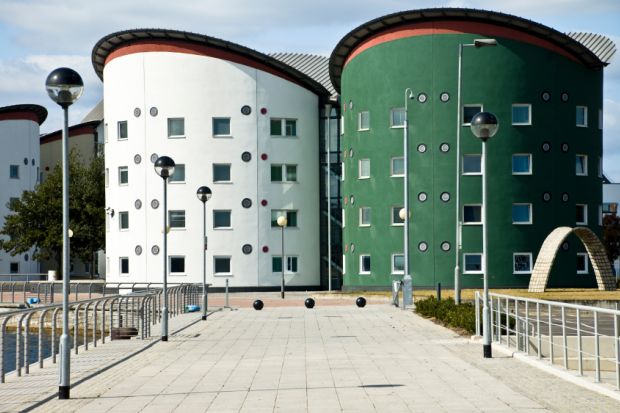Spending at four big institutions pushed UK universities’ overall estates expenditure past £3 billion for the first time, according to a report on the state of higher education estate management.
The report, from the Association of University Directors of Estates, said that the overall rise in spending in 2015-16 – up from about £2.5 billion the previous year – was down to four institutions spending £100 million each. These were Imperial College London, University College London and the universities of Cambridge and Edinburgh.
The majority of universities continue to have “relatively modest” programmes, according to the report.
The spending has taken place during a period of rising enrolments and, in England, growing income from £9,000 tuition fees. But AUDE’s Estates Management Report 2017 warns that universities will face tough decisions in the years ahead as demographic decline shrinks the pool of potential students, leading to a likely fall in funding available to institutions to maintain and develop their estates.
It says that about a third of all university buildings in the UK are coming to the end of their design life and will soon require costly refurbishment or replacement.
The UK government’s decision to launch a review of higher education funding in England adds to the uncertainty that universities face.
Mike Clark, chair of AUDE and director of estates and facilities management at the University of Brighton, said that the decisions universities make about their estate will “only become more difficult”.
“Alongside the uncertainty of Brexit, and studying in the UK a potentially more difficult process than ever before for overseas students, diving efficiency, reducing costs, improving service and increasing the commercial income from the estate will be vital for the survival of many institutions,” he said.
He added that smaller institutions would be keeping a “very close eye on their bottom line” and may have to choose between refurbishing older buildings to cut maintenance costs or creating “entirely new, more carbon-efficient spaces”.
“While it’s likely these decisions cause sleepless nights already, with the threat of further decreased income as a result of the teaching excellence framework’s sanctions, and a historic low in those available to recruit to university, more turbulent times are almost certainly ahead,” added Mr Clark.
“For many institutions, the challenge will be to develop capital programmes to update their estate, while student numbers remain level or, for some, even reduce.”
Register to continue
Why register?
- Registration is free and only takes a moment
- Once registered, you can read 3 articles a month
- Sign up for our newsletter
Subscribe
Or subscribe for unlimited access to:
- Unlimited access to news, views, insights & reviews
- Digital editions
- Digital access to THE’s university and college rankings analysis
Already registered or a current subscriber? Login








